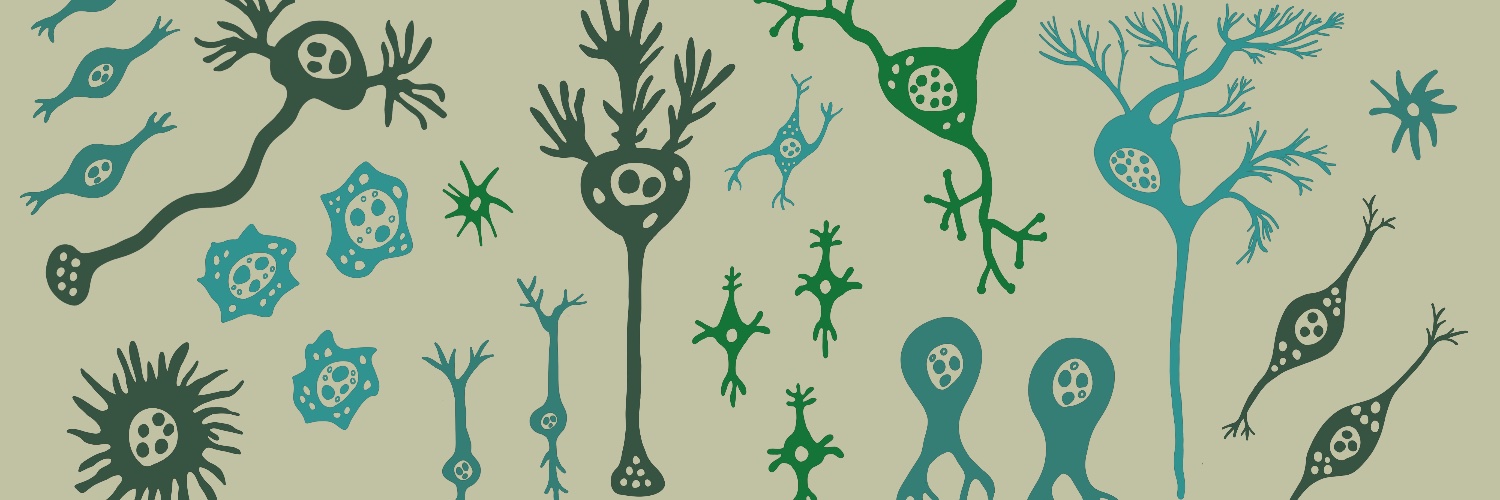
The Colonna Lab
@TheColonnaLab
We study innate immunity with a focus on ILCs, macrophages, and DCs. The account is led by trainees. @wusm_pathology @WUSTLmed
Check out Research Briefing for our recent paper in Nature Immunology @DuSiling nature.com/articles/s4159…

🧵1/ Excited to share my first publication from the @ColonnaLab in @NatImmunol! We investigated how mutations in the human CSF1R gene disrupt microglia and impair white matter integrity in a rare but devastating neurodegeneration called ALSP. nature.com/articles/s4159…
Our new study by @DuSiling reveals how CSF1R mutations in adult-onset leukoencephalopathy with axonal spheroids and pigmented glia (ALSP) disrupt glial homeostasis. Key roles for oligodendrocytes, astrocytes & STAT3 signaling. nature.com/articles/s4159…

Congrats to @KedmiRanit’s group! RORγt⁺ APCs prime food-specific pTregs and induce oral tolerance. Infection or food poisoning temporarily bypasses this, allowing CD8αβ T cell responses to mimicked food antigens without breaking long-term oral tolerance. nature.com/articles/s4158…

Congratulations to physicist Carl Bender of @washuartsci and immunologist Marco Colonna @washumedicine, who have been elected to the @americanacad for their pioneering work in quantum theory and immune pathways in Alzheimer’s. bit.ly/42SK87N
Excited to share that our work by @PatFernRod and @TongWu99 is published in Cell: RORγt+ DCs are required to induce oral tolerance. Their absence reduces pTregs and impairs oral tolerance to dietary antigens. Read more: authors.elsevier.com/sd/article/S00…
Loss of ATG7 in microglia impairs UPR, triggers ferroptosis, and weakens amyloid pathology control rupress.org/jem/article-ab…, in this work we linked autophagy with UPR and ferroptosis in the microglial response to AD @CaiZhangying @TheColonnaLab 🥳🍻🆗
Cai et al. @TheColonnaLab @washumedicine show that, in an #Alzheimers mouse model, microglial Atg7 deletion impairs plaque coverage, increasing Aβ diffusion & neurotoxicity, linked to reduced UPR, increased oxidative stress, & #ferroptosis of #microglia hubs.la/Q036BHM10
Excited to share that our work is featured on the cover of the latest issue of Cell Host & Microbe! Check it out! @TheColonnaLab @VinoloM @pewtrusts #Microbiology #Immunology #CellHostMicrobe
Our February issue is now live. Come explore the depths of microbiology! cell.com/cell-host-micr…
Our new paper in Cell Host & Microbe: Low-fiber diets worsen C. difficile infection by increasing epithelial MHC-II and expanding pathogenic CD4+ IELs. Fiber-derived acetate and FFAR2 boost ILC3 IL-22, suppressing colonic MHC-II and aiding recovery. authors.elsevier.com/sd/article/S19…
Our work by Fachi et al. @zefachi is out in PNAS! We show how NKp46+ ILC3s boost early gut defense against C. difficile infection by producing GM-CSF to support neutrophils. A potential path to new CDI treatments! pnas.org/doi/10.1073/pn…
Farewell party for David, a student from Ulrike Schleicher lab, who was a visiting student in our lab! Good luck David


🧵 Excited to share my first preprint from my PhD @kipnislab and @TheColonnaLab: "Brain-Engrafted Monocyte-derived Macrophages from Blood and Skull-Bone Marrow Exhibit Distinct Identities from Microglia." 🧠🦴 biorxiv.org/content/10.110…
Check out our newest resource led by @jaeger_natalia and @UlezkoAlina describing the NK-ILC1 gradient in human tissues: rdcu.be/dM64F. The IEL contains true mature (PRDM1+) and immature (PRDM1-) EOMES-ILC1, while other tissues harbor ILC1-like NKs expressing ZNF683.
Collaboration with @TheColonnaLab & others, in press at @Dev_Cell: The FGFR1OP gene, implicated in #Crohns, contributes to intestinal barrier function by modulating the actin cytoskeleton in crypt cells. (1/2) cell.com/developmental-…
Our new paper led by @TihanaTrsan, collaboration with @TheXavierLab, investigating the link between FGFR1OP and Crohn’s disease. Deletion of FGFR1OP, a centrosomal protein, in mouse gut cells disrupts crypt architecture, causing inflammation and fatality cell.com/developmental-…

Congrats @PatFernRod! Distinct lineages contribute to cDC2 diversity: lymphoid-derived pDC-like and myeloid-derived pre-cDC2 both develop into transcriptionally similar cDC2, crucial for humoral immune responses, and are distinct from pro-DC3 derived DC3. twtr.to/Tr5-h
